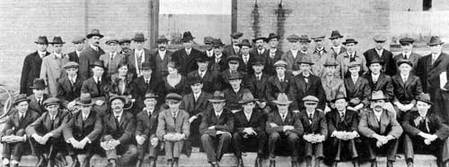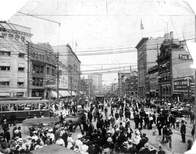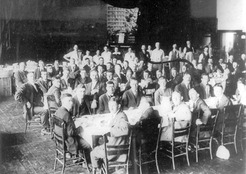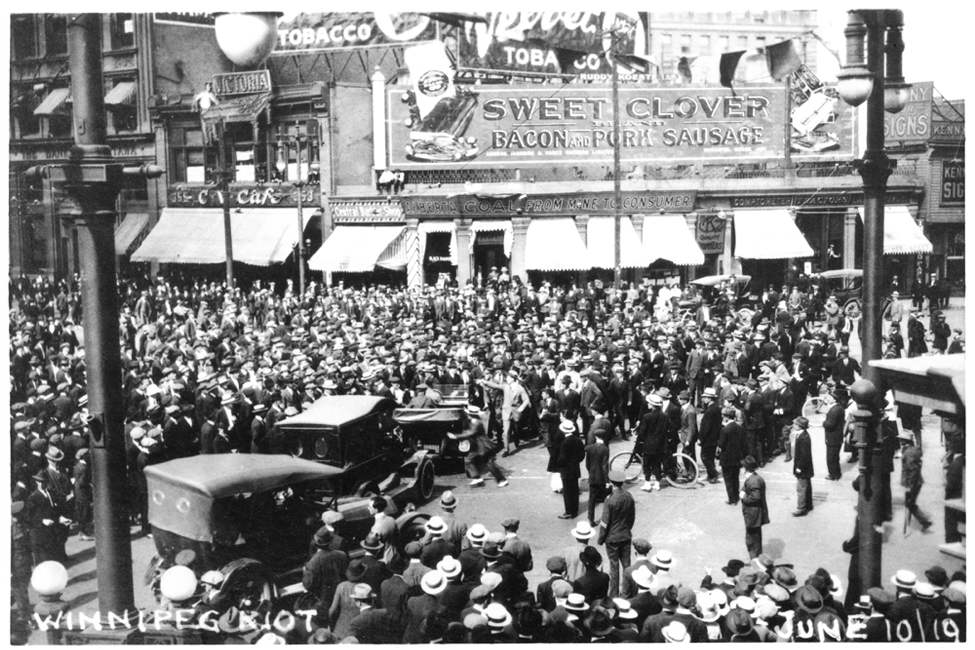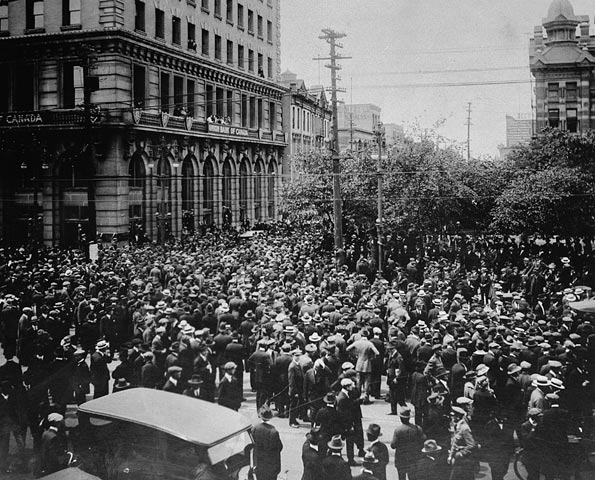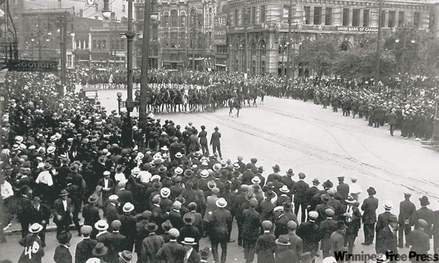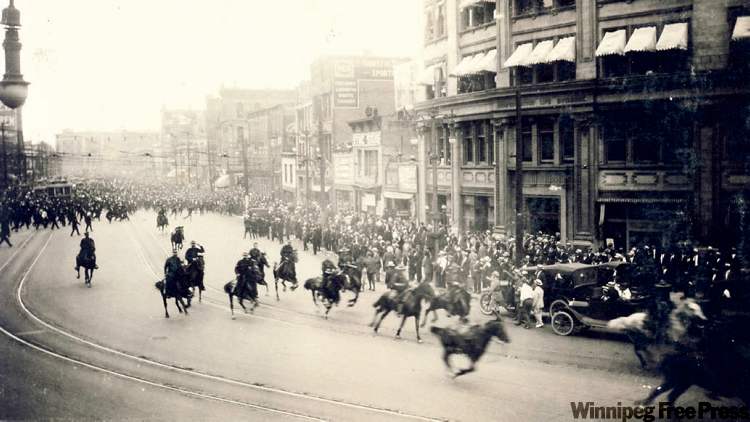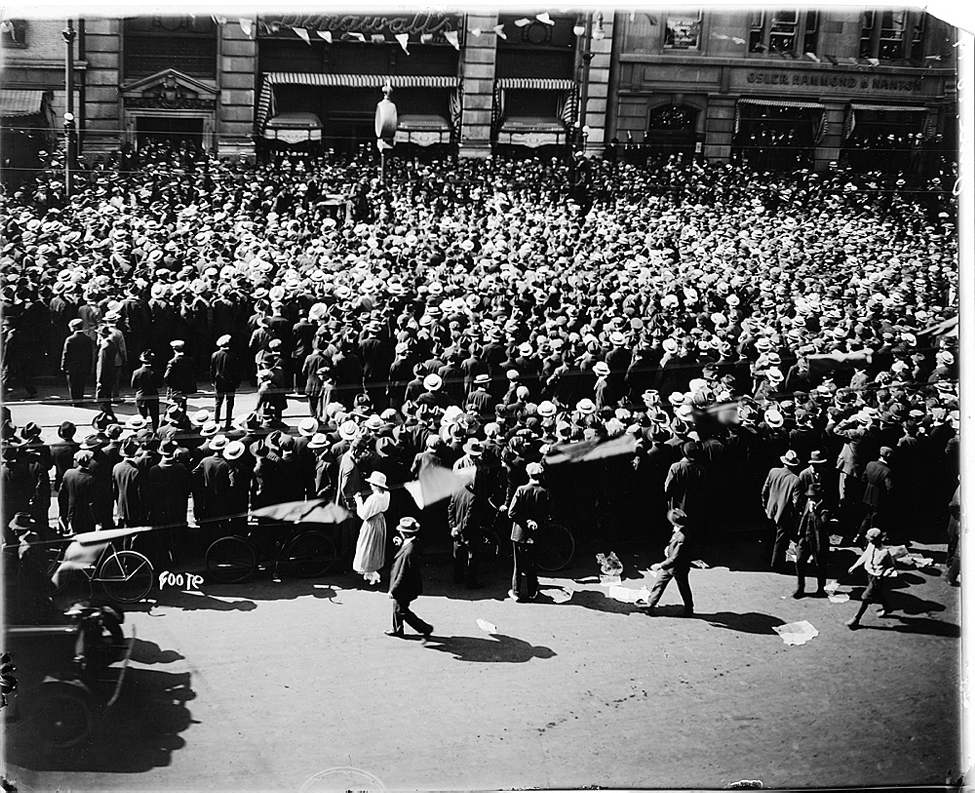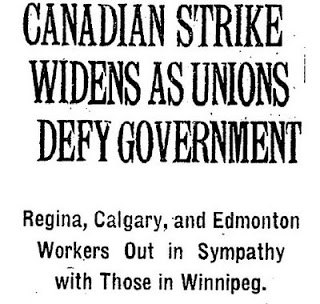The 1919 Winnipeg General Strike
August 31, 2014
The Winnipeg General Strike, from May 15 to June 25, 1919, is Canada's best-known general strike. Massive unemployment and inflation, the success of the Russian Revolution (1917), a wave of strikes across Canada and rising revolutionary industrial unionism all contributed to postwar labour unrest.
|
In Winnipeg on May 15, when negotiations broke down between management and labour in the building and metal trades, the Winnipeg Trades and Labour Council (WTLC) called a general strike.
At stake was the principle of collective bargaining, better wages and the improvement of often dreadful working conditions. Within hours almost 30,000 workers had left their jobs. The almost unanimous response by working men and women closed the city's factories, crippled its retail trade and stopped the trains. Public-sector employees such as policemen, firemen, postal workers, telephone operators and employees of waterworks and other utilities joined the workers of private industry in an impressive display of working-class solidarity. |
The strike was co-ordinated by the Central Strike Committee, composed of delegates elected from each of the unions affiliated with the WTLC. The committee bargained with employers on behalf of the workers and co-ordinated the provision of essential services.
|
Opposition to the strike was organized by the Citizens' Committee of 1000, created shortly after the strike began by Winnipeg's most influential manufacturers, bankers and politicians. Rather than giving the strikers' demands any serious consideration, the Citizens' Committee, with the support of Winnipeg's leading newspapers, declared the strike a revolutionary conspiracy led by a small group of "alien scum." The available evidence failed to support its charges that the strike was initiated by European workers and Bolsheviks, but the Citizens' Committee used these unsubstantiated charges to block any conciliation efforts by the workers.
|
|
Afraid that the strike would spark confrontations in other cities, the federal government decided to intervene; soon after the strike began, Senator Gideon Robertson, minister of labour, and Arthur Meighen, minister of the interior and acting minister of justice, went to Winnipeg to meet with the Citizens' Committee. They refused requests from the Central Strike Committee for a similar hearing. On their advice, the federal government swiftly supported the employers, and federal employees were ordered to return to work immediately or face dismissal. The Immigration Act was amended so that British-born immigrants could be deported, and the Criminal Code's definition of sedition was broadened.
On June 17 the government arrested 10 leaders of the Central Strike Committee and two propagandists from the newly formed One Big Union. Four days later, a charge by Royal North-West Mounted Police into a crowd of strikers resulted in 30 casualties, including one death. "Bloody Saturday" ended with federal troops occupying the city's streets. Six of the labour leaders were released, but Fred Dixon and J.S. Woodsworth were arrested. Faced with the combined forces of the government and the employers, the strikers decided to return to work on June 25. The General Strike left a legacy of bitterness and controversy. In a wave of increased unionism and militancy across Canada, sympathetic strikes erupted in centres from Amherst, NS, to Victoria, BC. Seven of the arrested leaders were unfairly convicted of a conspiracy to overthrow the government and sentenced to jail terms from 6 months to 2 years; the charges against J.S. Woodsworth were dropped. Almost 3 decades passed before Canadian workers secured union recognition and collective bargaining. Source: Edited article by Canadian Labour History and Civilization | Unifor Council 4000 |
Related:
August 31, 2014: Celebrate Labour and its History this Labour Day
August 31, 2014: Labour Day - The Holiday Canada gave the World

